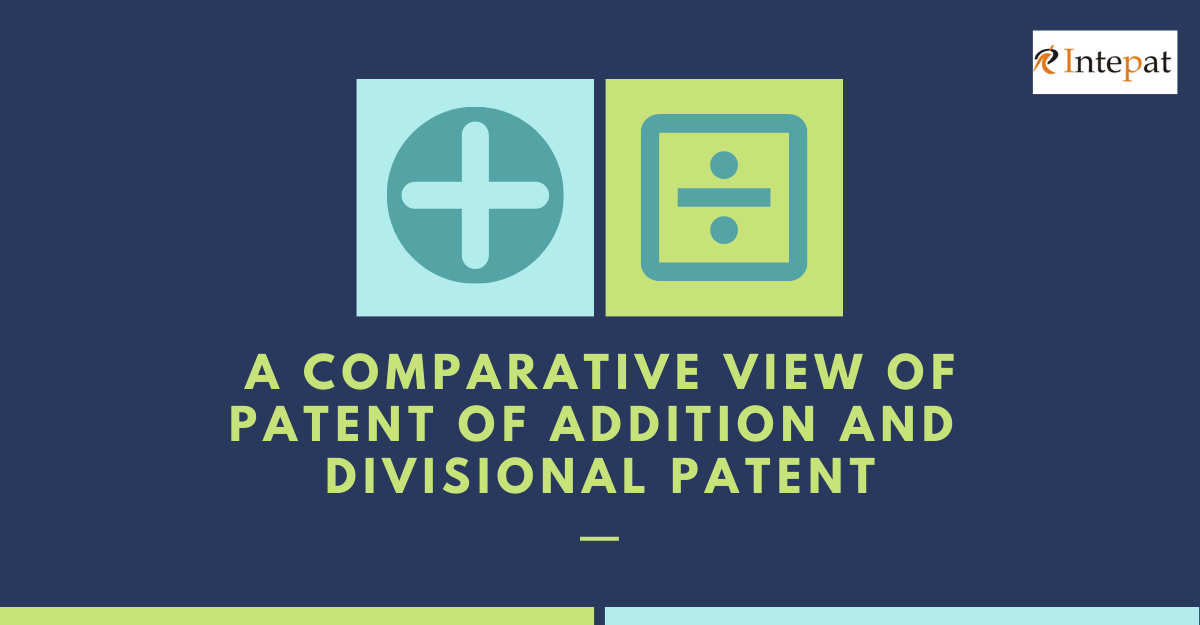Patent of Addition Vs Divisional
Patenting an invention involves a series of procedures. However, the process of the invention does not stop with patent filing. Inventions occur perpetually. Hence, inventors are bound to come across several improvements that may be vital game-changers to the invention. Likewise, inventors might claim more than one invention in a single application. What happens to all such complications that occur during the due course of a patenting process?
Luckily, our Intellectual Property (IP) system has its remedies for such obstacles. We call them patent of addition and divisional patent applications. Let us look into them for a better understanding. You might need them during your patenting process.
Patent of Addition
It takes years to receive a patent for your invention. Meanwhile, you may develop improvements in your invention that require protection from infringement. Moreover, as you have already applied for a patent, it might be challenging to file a new patent application as the minor improvement may lack an inventive step. In such instances, you can opt for a patent of addition rather than submitting a new patent application.
However, you must ensure that your patent of addition includes a statement that it is a modification or improvement of the invention. Moreover, the patent of addition should have a reference to the main patent application,
The Patent Act 1970, Section 54, Section 55, and Section 56 describe the salient features of a patent of addition as follows:
Section 54: The IP Office will grant a patent of addition only if the date of filing the patent of addition is the exact date or a date after the main patent application (parent application).
Section 55: The validity of the patent of addition application is the same as the parent application. Irrespective of the filing date, the patent of addition will remain active as long as the parent patent is active. At times, the IP office may revoke the parent patent. In such cases, the patent holder can request the Controller of Patents to make the patent of addition an independent patent till the duration of validity of the parent patent. Moreover, the applicant need not pay any additional fee to renew the patent of addition. The parent patent’s renewal fee includes the patent of the additional renewal fee.
Section 56: The IP office will not refuse a patent of addition due to the lack of an inventive step. Besides, it will not question the patent of addition application because it must be an independent patent.
Divisional Patent application
Every patent application must focus on one single invention. Sometimes, the inventor might file a patent application with more than one invention, which might raise objections from the IP office during the examination stage.
When a single patent application claims more than one invention, the applicant can divide the application into two or more applications. The new applications derived from the parent application are called a divisional patent applications.
According to section 16 of the Indian Patent Act, 1970:
– the applicant can voluntarily opt to file a divisional application;
– the applicant can file a divisional patent in response to an objection from the examiner.
The Indian Patent Appellate Board (IPAB) further states that though the applicant has the right to file a divisional application voluntarily, it is the sole discretion of the Controller to grant such requests. The Controller undergoes a thorough study and confirms that more than one invention is claimed in the patent application. This, in turn, will avoid any double patenting issues.
The divisional application should not repeat claims from the original parent application. Furthermore, the subject matter of the divisional patent should include and be relevant only to the subject matter specifications disclosed in the parent application. The priority date for the divisional applications is always the same as the parent application. Generally, divisional patent applications are valid for 20 years from filing the parent application.
What to opt for?
Undoubtedly, both patents of addition and divisional patent applications ease the patenting process and offer better protection for the invention. However, they are used on different occasions. An applicant can use a patent of addition when he needs to add improvements to the existing patent application. Whereas divisional patents, on the contrary, split the parent application when there are claims with more than one invention. The tenure of validity remains as long as that of the parent application for both applications.
Though the patent of addition is a cost-effective tool to protect an invention, it may not always be a wise option. Usually, an inventor files for a patent of addition at a later stage. Hence, this shortens the validity tenure of the patent of addition. For example, if the applicant files a patent in the year 2020 and proceeds to file a patent of addition in the year 2025, the addition patent, too, will expire in 2040 along with the parent patent. This shows that the inventor can enjoy exclusive rights on the patent of addition only for 15 years.
However, most of the time, an inventor files for a divisional patent only when there is an objection from the examiner. Hence, there is not much room left to choose whether or not to file a divisional patent application. One must submit the divisional patent per the norms to patent their invention.
None has better knowledge about the invention than the inventor. Ultimately, the objective of patenting is to protect the invention and grant exclusive rights to the patent holder. Hence, effectively making use of a patent of addition or a divisional patent application to maximize protection for their hard-earned invention lies solely in the hands of the inventor.
[cherry_button text=”Need Help? Connect with experts” url=”https://www.intepat.com/contact-us/” style=”success” centered=”yes” fluid_position=”right” icon_position=”top” bg_color=”#ea9525″ min_width=”33″ target=”_blank”]




